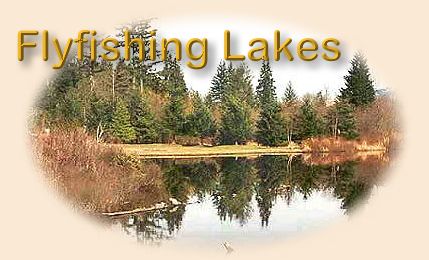FISHING A LAKE AFTER BREAKUP
Bernie's quest for ice-out on lakes in Montana
goes from early May through early August—roughly
ninety days. He's generally in the high country
for sixty out of the ninety days. In that time
he fishes about 10 percent partial clearing, 2
percent breakup, and 88 percent post-breakup
conditions.
I don't push into the high country as early as
Bernie does and my percentage of post-breakup
days is probably around 98 percent. With the
post-breakup period I begin the stalking and
hatch-matching strategies. This is when I search
not just for feeding fish, but for the largest
fish feeding in a particular body of water.
High-mountain lakes aren't very complex
environments. My stomach samplings put
trout and grayling into one of three
feeding groups during the post-breakup
period:
Once the ice goes out on lakes, most aquatic
insects — caddisflies, mayflies, stoneflies,
damselflies won't start hatching for at least
a few weeks. This is just as true on valley
lakes as it is on high-mountain lakes.
It's not so with midges. They are ready to
pop out as soon as the first slit of open
water appears on a lake. They must have some
way of timing pupation—the last spurt of growth
has to begin when the lake is still frozen over.
The freshly emerged adults crawl out on the ice
edges and the snowbanks.
Even trout in high-mountain lakes can get
fussy about imitation when they feed on
emerging midges day after day. My favorite
flies, fished in tandem, are an Improved
Buzz Ball and a Halo Midge Emerger. The
Buzz Ball, matching a mating cluster of
adults, provides visibility and functions
as a strike indicator. The Halo Midge Emerger
may range from size 14 to size 24, but it's
always black—the early ice-out midges are
always black on the lakes I fish.
I tie nine to twelve inches of monofilament
into the eye of the Buzz Ball and dangle the
Halo Midge Emerger off the back, greasing both
flies with floatant. I cast into the middle
of the rising fish and let the flies sit there.
This can be nerve-racking when rolling trout
are slopping like pigs at a trough, but even
the slowest retrieve won't help and will
probably hurt chances of a hookup.
Not all parts of a lake get the same number
of emerging midges. The early season hatches
are thickest in flat, shallow areas. Broad
bays, especially if there is a dark bottom
that warms in the sun, usually prove best.
The outlet shelf, where the current gathers,
and the silty, alluvial fan of the inlet
often produce good hatches, also.
Unlike Bernie Samuelson, most people don't
have the time like to search and chart the
ice-out succession of high-mountain lakes
ever higher through the early season. Most
don't even have the time to hike once or
twice a week into the high country. For the
backpacking angler, however, hitting these
waters at or close to breakup is still the
key to fabulous fly fishing.
There is a shortcut. I found the perfect one.
I had a pilot fly me over the Bitterroot-Selway
Wilderness Area last spring. He swung low over
various lakes while I found names on a
topographical map. In half an hour I knew if
a dozen waters were still frozen, completely
ice free, partially open, or even, from the
look of the ice, about to break up.
You don't have to fly over an area yourself
(although it's a nice luxury). You just have
to talk to airplane and helicopter pilots who
regularly cover an area. At one of our local
hospitals there's a life-flight helicopter;
and two of the regular people on the flights
are fly fishermen. They gladly chart lakes
for me. Out here the majority of people are
fishermen, and all of them like to look at
mountain waters. ~ GL
To be continued, next time: PRIMING ON THE VALLEY LAKES
|

